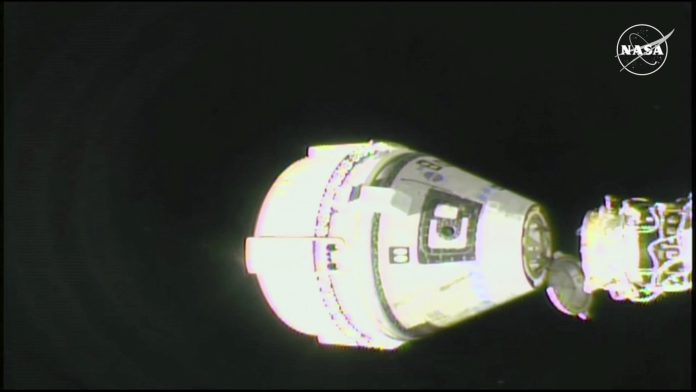Boeing’s Starliner capsule returned from the International Space Station on Friday evening, wrapping up its nearly three-month stay in space. However, it came back with an empty cabin, leaving behind two NASA test pilots who will remain on the station for another five to six months.
The Starliner undocked from the station just after 6 p.m. ET, according to NASA, and spent around six hours free-flying in orbit before descending toward Earth. At 12:01 a.m. ET on September 7, the capsule successfully touched down at White Sands Space Harbor, New Mexico.

Before departing, NASA astronauts Butch Wilmore and Suni Williams, who had flown Starliner to the space station in June, sent the spacecraft, nicknamed “Calypso,” off with best wishes. Williams encouraged the mission control team, saying, “It is time to bring Calypso home. You’ve got this.”
As Starliner made its reentry, it faced one of the most critical phases of the mission. Traveling at over 17,000 miles per hour, it had to withstand the immense pressure and friction of Earth’s atmosphere, which heated the exterior to over 3,000 degrees Fahrenheit. The capsule deployed redesigned parachutes to slow its descent before landing gently with the help of airbags.
Unlike other U.S.-made capsules, Starliner is designed to land on solid ground rather than splash down in the ocean. Boeing hopes this method will simplify the recovery and refurbishment process after each flight.
Mark Nappi, vice president of Boeing’s Commercial Crew Program, praised the teams for ensuring a safe undocking, reentry, and landing. He said they would review the data to determine the next steps for Starliner.
NASA’s Commercial Crew Program manager, Steve Stich, acknowledged the success of the mission but admitted that NASA’s risk assessments had prevented the agency from allowing astronauts to return aboard Starliner. Despite a near-flawless reentry, ongoing concerns about thruster malfunctions and helium leaks led to the decision to fly the capsule home without crew.
Starliner’s performance on this uncrewed mission will have broader implications for Boeing’s future. The company has faced years of setbacks and lost over a billion dollars correcting issues with the spacecraft. It remains unclear whether NASA will require another test flight or move forward with crewed missions after this successful landing.


